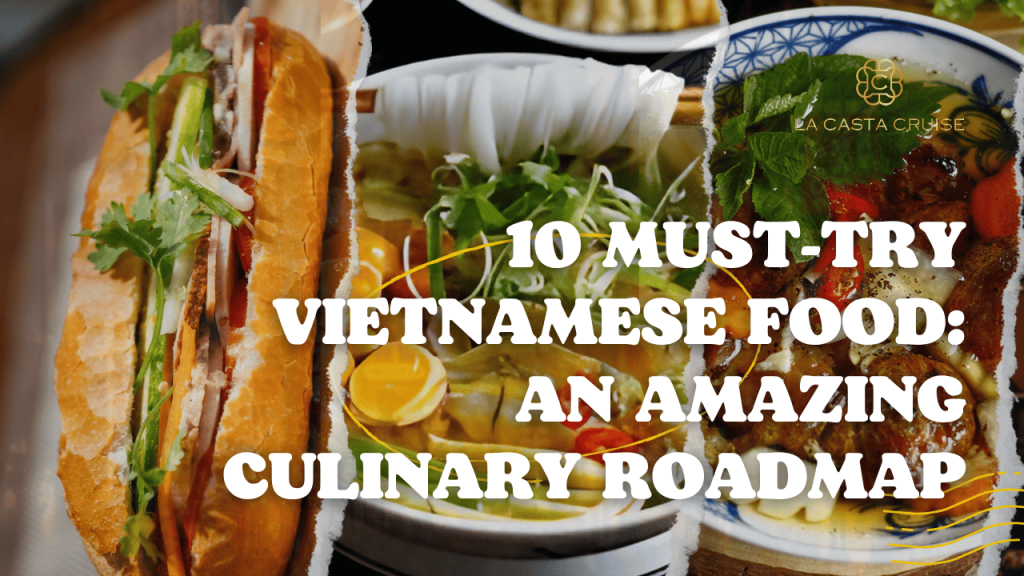I. The Ultimate Guide to the 10 Must-Try Vietnamese Food for Tourists
Vietnam stands as one of the world’s premier gastronomic destinations, revered globally not just for its complex flavors but also for its inherent health benefits and vibrant street food culture. The culinary landscape of Vietnam is a living mosaic, blending ancient traditions with global influences, resulting in a cuisine that is both profoundly sophisticated and refreshingly accessible. This detailed guide highlights the 10 Must-Try Vietnamese Food for Tourists, providing not only a description of these essential dishes but also the cultural context and practical guidance needed for an unforgettable culinary adventure.
Why Vietnamese Cuisine Captivates Global Travelers
Vietnamese cuisine is defined by its balance and freshness. Unlike Western or some Chinese dishes rich in oil, Vietnamese cooking uses minimal grease, relying instead on fresh herbs and vegetables to achieve a light yet flavorful profile. Each dish harmoniously blends sweet, sour, salty, and umami notes — the essence of its culinary philosophy.
Centuries of cultural exchange shaped today’s flavors: Chinese influence introduced soy sauce and noodles, while French colonization brought the baguette (inspiring Bánh Mì) and beef, key to Phở. Understanding these roots enriches the experience of exploring the 10 Must-Try Vietnamese Food.
Modern travelers prefer practical, list-based content, making this guide the ideal format to discover Vietnam’s most iconic dishes.
II. Dive into the Essential Vietnamese Street Food Guide: Foundational Tips
For many visitors, the truest expression of Vietnamese cooking is found on the sidewalks and bustling markets, making an Essential Vietnamese Street Food Guide a necessity for a successful trip. Engaging with street food requires understanding a few cultural and logistical nuances.
2.1. Navigating the Vietnamese Street Food Scene
In Vietnam, the true measure of quality and safety in street food isn’t fancy facilities, it’s crowd size. The golden rule: follow the locals. Busy stalls mean high turnover, ensuring ingredients stay fresh and safe.
Timing also matters. Early mornings are best for noodles and sticky rice, lunchtime (11:30 am–1:00 pm) brings crowds to Cơm Bình Dân stalls, and evenings (6–8 pm) are ideal for grilled seafood or hotpot. Always look for clean setups and fresh, colorful ingredients.
Local diners trust popularity over appearance, a vital insight for travelers. This simple mindset shift, highlighted in the Essential Vietnamese Street Food Guide, helps visitors confidently enjoy Vietnam’s most authentic flavors.
2.2. Ensuring Safety: A Guide for First-Time Visitors
III. The Top 10 Must-Try Vietnamese Food for Tourists: Regional Masterpieces
Vietnam’s regional diversity means that the 10 Must-Try Vietnamese Food for Tourists offer distinct experiences, moving from the delicate flavors of the North to the robust and spicy tastes of the Center and the sweeter, abundant portions of the South.
1. Pho: The Iconic Beef Noodle Soup of Vietnam
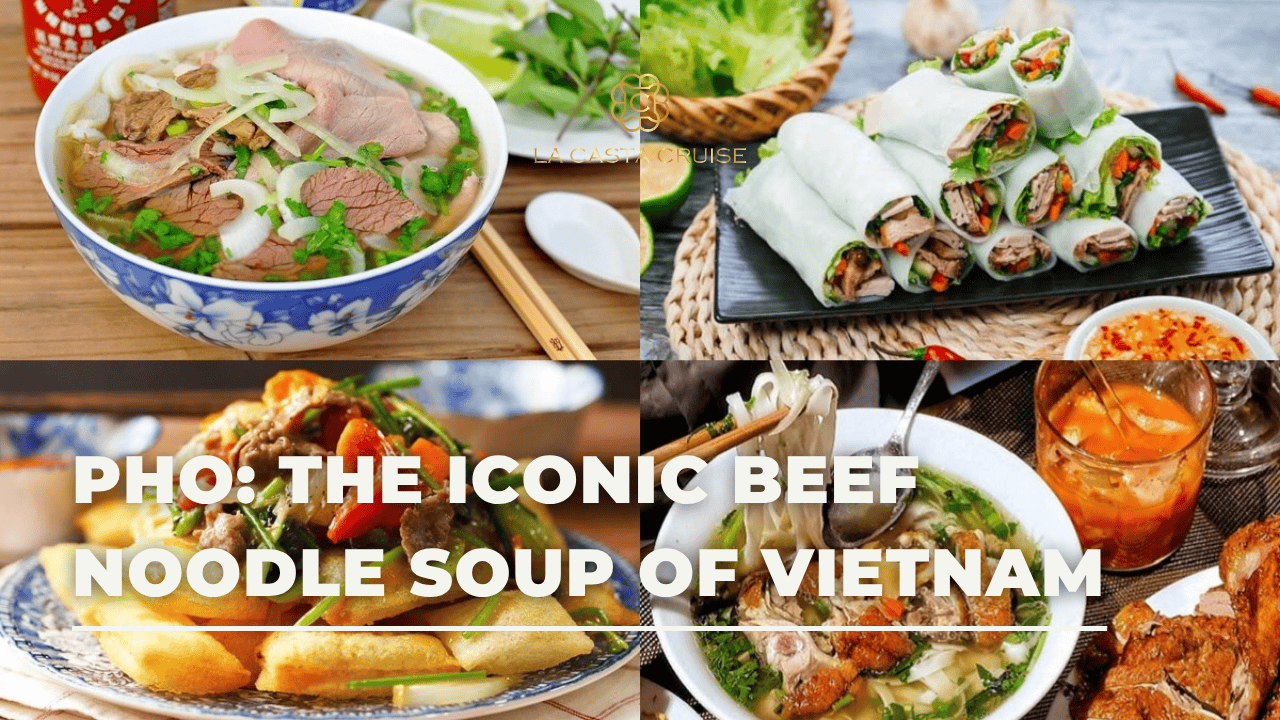
Pho is Vietnam’s most iconic dish and a highlight among the 10 Must-Try Vietnamese Food for Tourists. Originating in Northern Vietnam in the early 20th century, it blends Chinese noodle traditions with French slow-cooking techniques. After that, northern migrants brought Pho south, and now it has gained global fame.
Regional variations significantly alter the experience. The Hanoi (Northern) style maintains a clear, aromatic, and delicate broth, often relying heavily on ginger and star anise, and is traditionally served with wide, flat rice noodles. In contrast, the Saigon (Southern) style is often noticeably sweeter, featuring narrower noodles and a generous platter of side garnishes, including mung bean sprouts, cinnamon basil (húng quế), and bottles of Hoisin and Sriracha sauce, allowing for greater personal customization. Regardless of location, the preparation reflects a dedication to patience, often involving simmering bones and spices for hours to create the complex, flavorful base that defines this Vietnamese masterpiece.
2. Banh Mi: Unique Vietnamese dishes you can’t miss
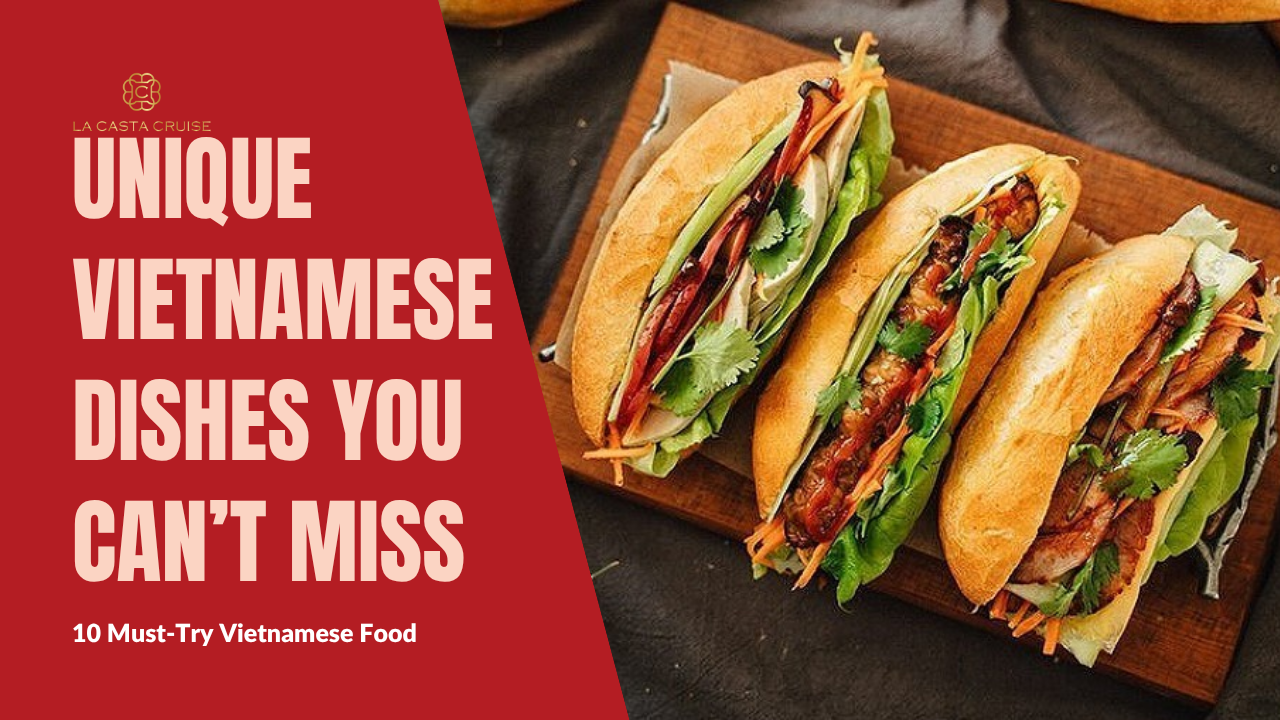
Bánh Mì is a celebrated fusion dish, distinguished by its short baguette. The Vietnamese version boasts a thin, crisp crust and a light, airy interior.
The distinctly Vietnamese sandwich style emerged in Saigon in the 1950s, leading to the designation Bánh Mì Sài Gòn. This preparation brilliantly combined French staples like pâté and mayonnaise with native, refreshing Vietnamese ingredients: chả lụa (Vietnamese sausage), pickled daikon and carrots, cucumber slices, and fresh coriander. This blend of creamy, savory, and pickled textures is what makes the dish a standout among the 10 Must-Try Vietnamese Food for Tourists. While Hanoi’s versions tend to be simpler, focusing on meat and bread, Southern street stalls offer abundant variety, incorporating fillings such as barbecued pork (xá xíu) or Vietnamese minced pork (xíu mại). Bánh Mì is typically consumed for breakfast or as a quick snack.
3. Bún Chả: The Smoky Grilled Pork Specialty of Hanoi
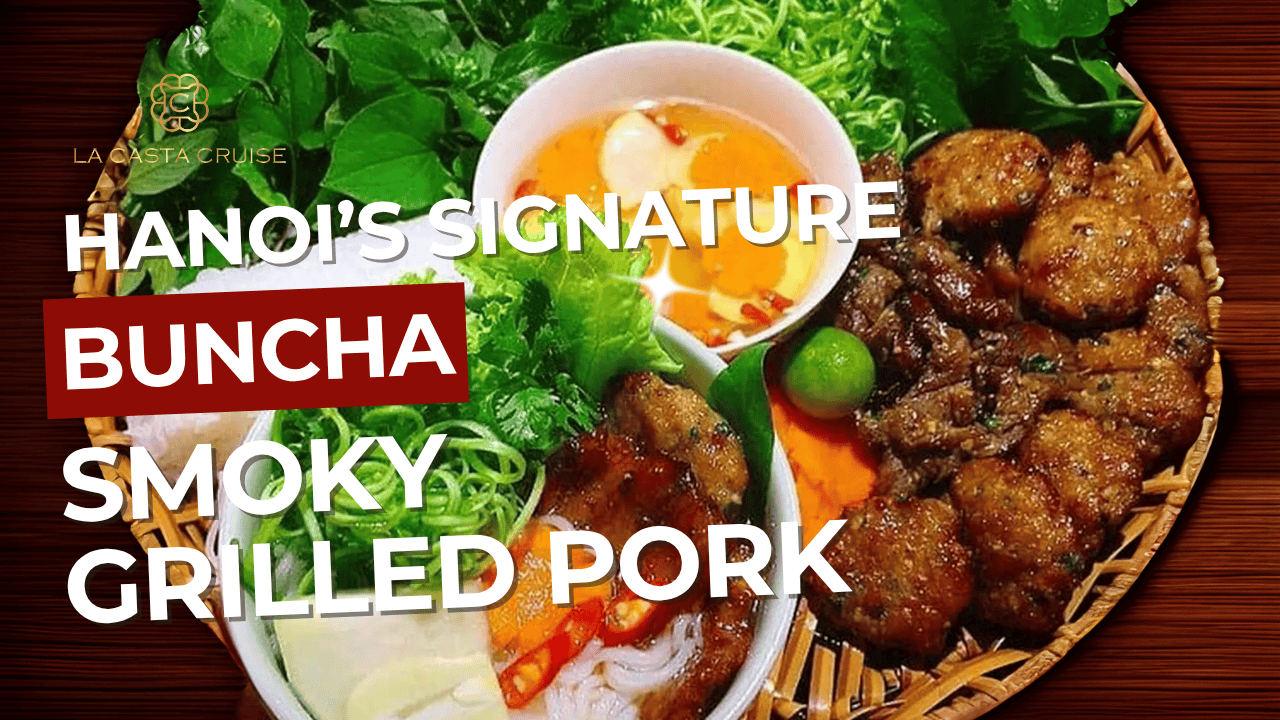
A beloved northern specialty, Bún Chả is deeply rooted in Hanoi’s culinary identity, dating back to at least the mid-20th century, though some stories trace its creation to a Hanoi grill master in the late 19th century. It is one of the most recognizable items in any Essential Vietnamese Street Food Guide.
The dish is defined by its components: smoky, tender, grilled fatty pork patties (chả) and slices of pork belly served in a bowl of lightly warm, sweet, and tangy nước chấm (fish sauce-based dipping broth). This broth is served alongside a generous platter of fine white rice vermicelli (bún) and various fresh herbs. The traditional method of eating involves dipping portions of the cold vermicelli and herbs into the warm broth containing the meat, creating a perfect temperature and textural contrast in every mouthful. Bún Chả is traditionally a lunchtime dish, a unique cultural feature of the capital, and remains entirely distinct from the Southern dish, Bún Thịt Nướng.
4. Gỏi Cuốn (Fresh Spring Rolls): The Healthy, Flavorful Wrap
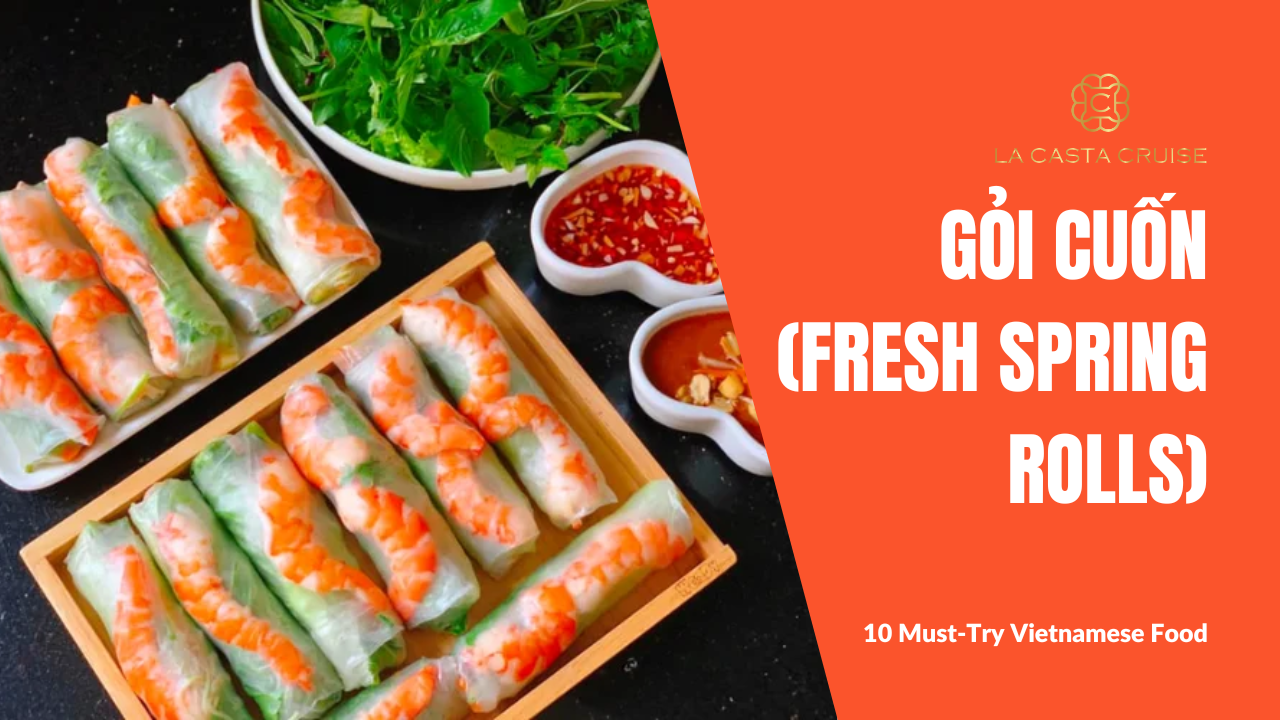
Gỏi Cuốn, or fresh spring rolls, represent the Vietnamese culinary philosophy of lightness and health, making them a perfect addition to the 10 Must-Try Vietnamese Food for Tourists. Unlike their fried counterparts, these translucent rolls are served at room temperature, deliberately emphasizing the fresh, natural flavors of the filling.
The dish involves wrapping a combination of boiled shrimp (tôm), lean pork slices, rice vermicelli, and a bouquet of aromatic herbs (such as mint and basil) inside thin, soft rice paper sheets (bánh tráng). The true flavor explosion often comes from the dipping sauce—a thick, savory Hoisin-peanut mixture, frequently enhanced with lime juice, chili paste, and ground peanuts. The construction of the roll itself, juxtaposing the soft wrapper with crisp vegetables and tender protein, perfectly illustrates the pursuit of textural balance in Vietnamese gastronomy.
5. Bún Bò Huế: The Bold and Spicy Contender from Hue
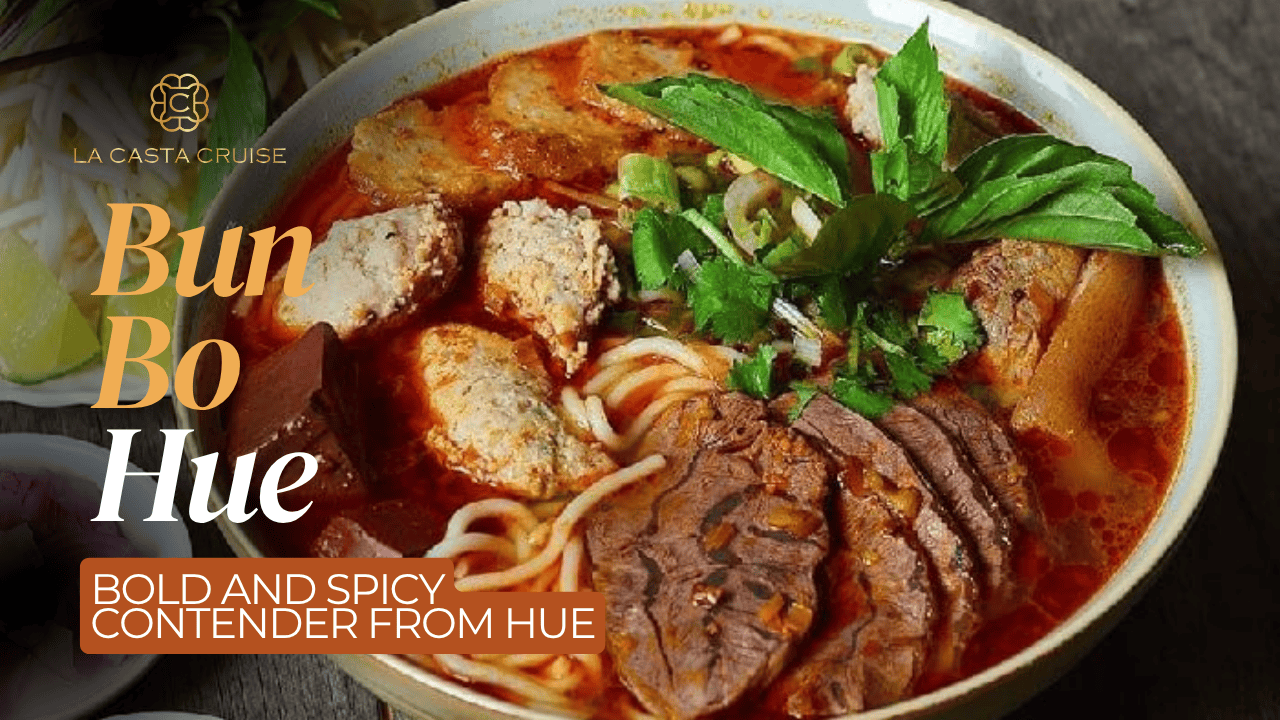
Hailing from the imperial capital of Hue in Central Vietnam, Bún Bò Huế is a powerful, robust, and often spicy noodle soup that provides an excellent alternative to Phở. Its flavor profile reflects the Central region’s preference for intensity and boldness.
The broth is the defining feature, made by simmering beef and pork bones and heavily flavored with a potent combination of lemongrass, chili oil, and fermented shrimp paste (mắm ruốc), which imparts a distinct reddish hue and a deep, savory, umami-packed flavor. Key differences from Phở include the use of thicker, round rice noodles (bún), and a medley of protein toppings such as thick slices of beef shank, pig trotters, pork knuckle, Vietnamese sausage (chả huế), and occasionally, congealed pork blood cake. For travelers craving heat and heartiness, Bún Bò Huế is a must-try dish that truly expands the definition of Vietnamese noodle cuisine.
6. Chả Mực: The Chewy Squid Cakes of Ha Long Bay, Quang Ninh

Fulfilling the requirement for a regional dish from the Quang Ninh area, Chả Mực (Ha Long grilled chopped squid) is considered the culinary icon of Ha Long Bay, a specialty recognized nationally as one of Vietnam’s top 50 dishes. This dish confirms the regional diversity found within the 10 Must-Try Vietnamese Food for Tourists.
The secret to its unparalleled quality and unique, springy texture lies in the source of the squid and the preparation method. Squid harvested from the deep, cool waters of the Gulf of Tonkin naturally possesses firmer flesh. Crucially, the squid is traditionally hand-pounded into a paste, rather than machine-ground. This laborious, generational technique preserves the inherent chewiness of the squid and maximizes its natural flavors, resulting in cakes that are crispy and golden on the outside, yet distinctively firm and juicy within.
The dedication to this traditional hand-pounding process elevates Chả Mực beyond simple fried food, transforming it into an expression of local heritage. The emphasis on using superior, locally sourced marine life, combined with the traditional preparation, reinforces the dish’s status as a must-try experience, symbolizing the region’s culinary branding and dedication to quality. The most popular way for visitors to enjoy this dish is paired with Bánh Cuốn Chả Mực (steamed rice rolls with squid cake), a local favorite breakfast where the tender, soft rice rolls complement the crispy, savory squid cakes.
7. Cơm Tấm: Southern Vietnam’s Beloved Broken Rice Plate
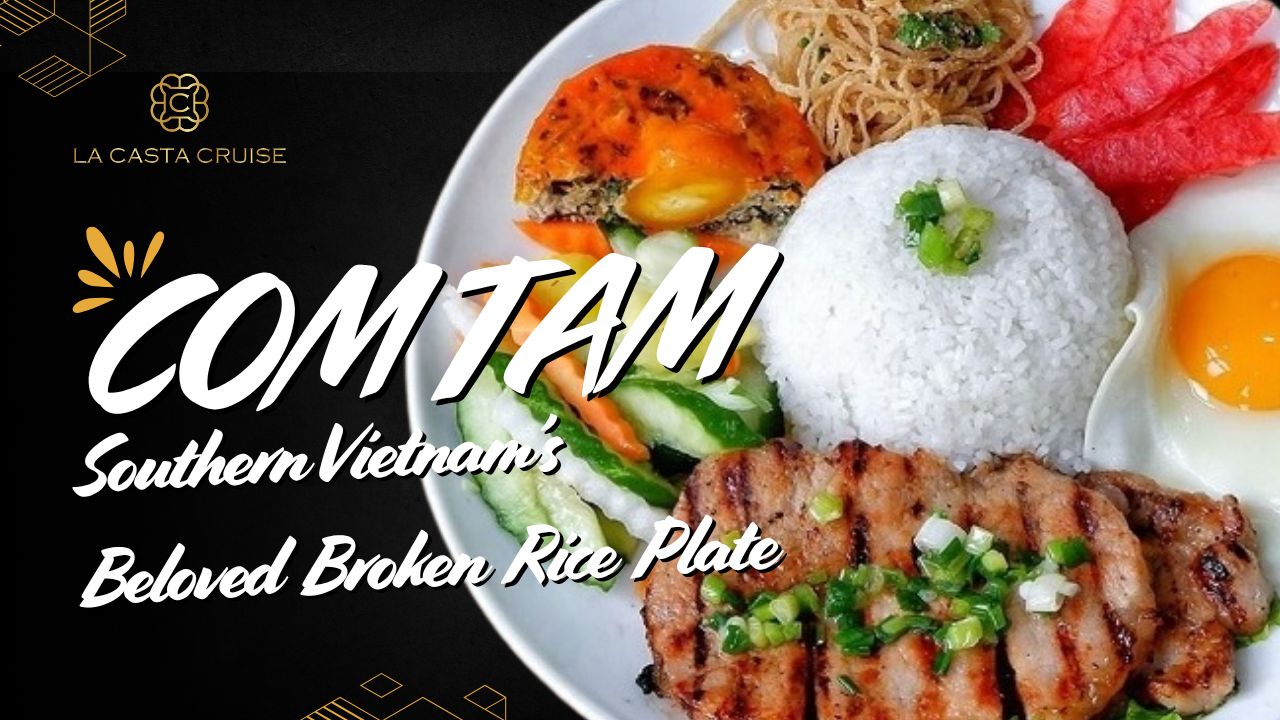
Cơm Tấm, literally “broken rice,” originated in Southern Vietnam, specifically Saigon (Ho Chi Minh City), where it began as a humble meal for laborers. Broken rice grains, fractured during the milling process and once considered “imperfect,” were resourcefully transformed into an iconic, deeply cherished national dish.
Today, a typical plate of Cơm Tấm is a hearty, complex affair. It consists of the signature broken rice topped with various grilled items, most commonly sườn nướng (marinated grilled pork chop). Essential accompaniments often include bì (shredded pork skin), a fried egg (trứng ốp la), and a slice of Vietnamese steamed egg cake, all generously drizzled with nước chấm (fish sauce). The dish exemplifies the resilience and ingenuity of Vietnamese cuisine, showcasing how simple, overlooked ingredients can be elevated into a source of comfort, identity, and cultural pride.
8. Cao Lầu: The Mystery Noodle Dish Exclusive to Hoi An

Cao Lầu is a regional noodle dish from Hoi An, Central Vietnam, that remains unique among the 10 Must-Try Vietnamese Food for Tourists due to its almost mythical preparation. The noodles themselves are distinctive: grayish-brown or yellowish, wide, and thick, possessing a characteristic chewy and springy texture that sets them apart from all other Vietnamese noodle varieties.
The dish’s exclusivity is rooted in a compelling local tradition. According to legend, the rice used to make the noodles must be soaked in lye water derived from the ashes of specific cajuput trees found only on the nearby Cham Islands. Furthermore, the water used in the process must be drawn from the ancient Bá Lễ well located within Hoi An. This specific geographical requirement creates a powerful culinary narrative, strongly encouraging travelers to seek the authentic experience only in Hoi An, thus reinforcing the town’s unique identity. Cao Lầu is served with minimal savory broth (it is not a true soup), and is topped with char siu-style pork, crispy pork skin or crackers, bean sprouts, and fresh herbs.
9. Bánh Xèo: The Sizzling Golden Pancake
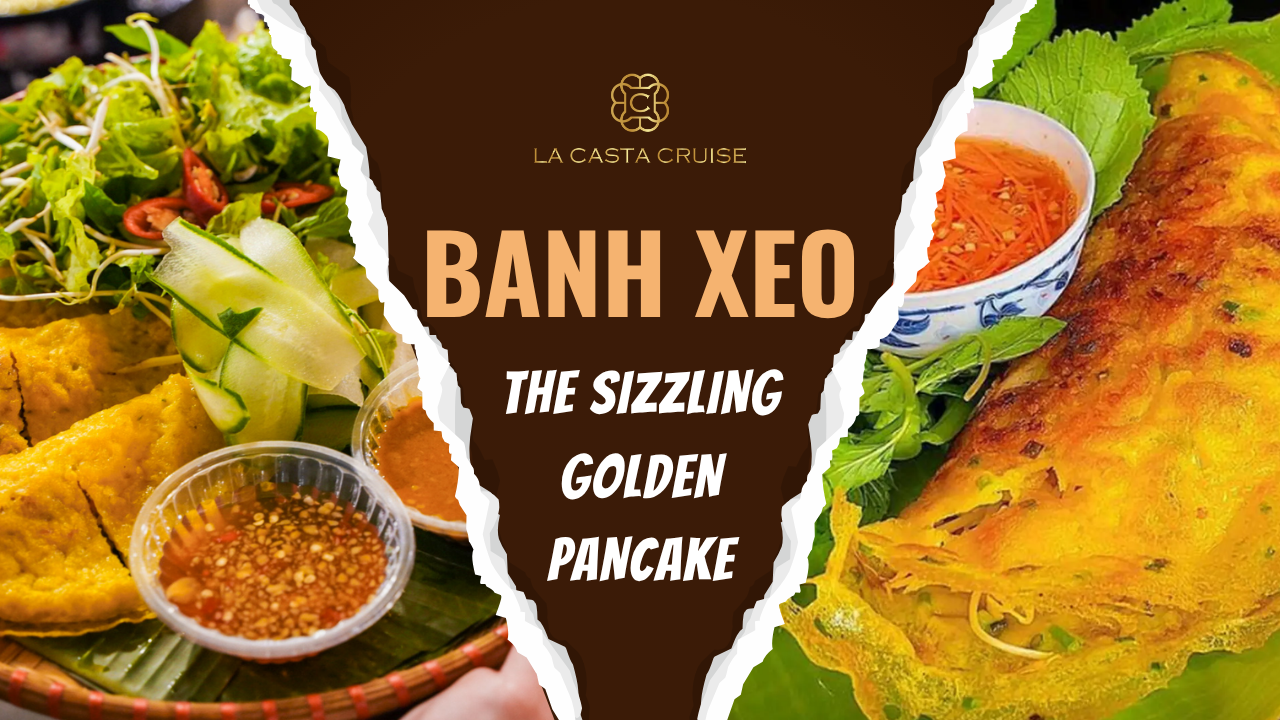
Bánh Xèo, meaning “sizzling cake,” earns its name from the satisfying hiss produced when the rice flour batter hits the hot oil in the pan. This savory golden pancake is a popular street food found across Vietnam, although its size and preparation vary significantly by region.
The Southern style (Bánh Xèo Miền Tây), commonly found in Ho Chi Minh City and the Mekong Delta, is famously massive, making it ideal for sharing. The Central Vietnamese version (Miền Trung) is typically smaller and often cooked in clay molds. The crepe is usually filled with pork, shrimp, and bean sprouts. The traditional eating method involves tearing off a piece of the hot Bánh Xèo, wrapping it inside a large piece of lettuce or rice paper along with fresh herbs, and dipping the entire wrap into a dedicated tangy sauce, resulting in a combination of heat, crunch, and freshness.
10. Cà Phê Trứng (Egg Coffee): Hanoi’s Indulgent Beverage
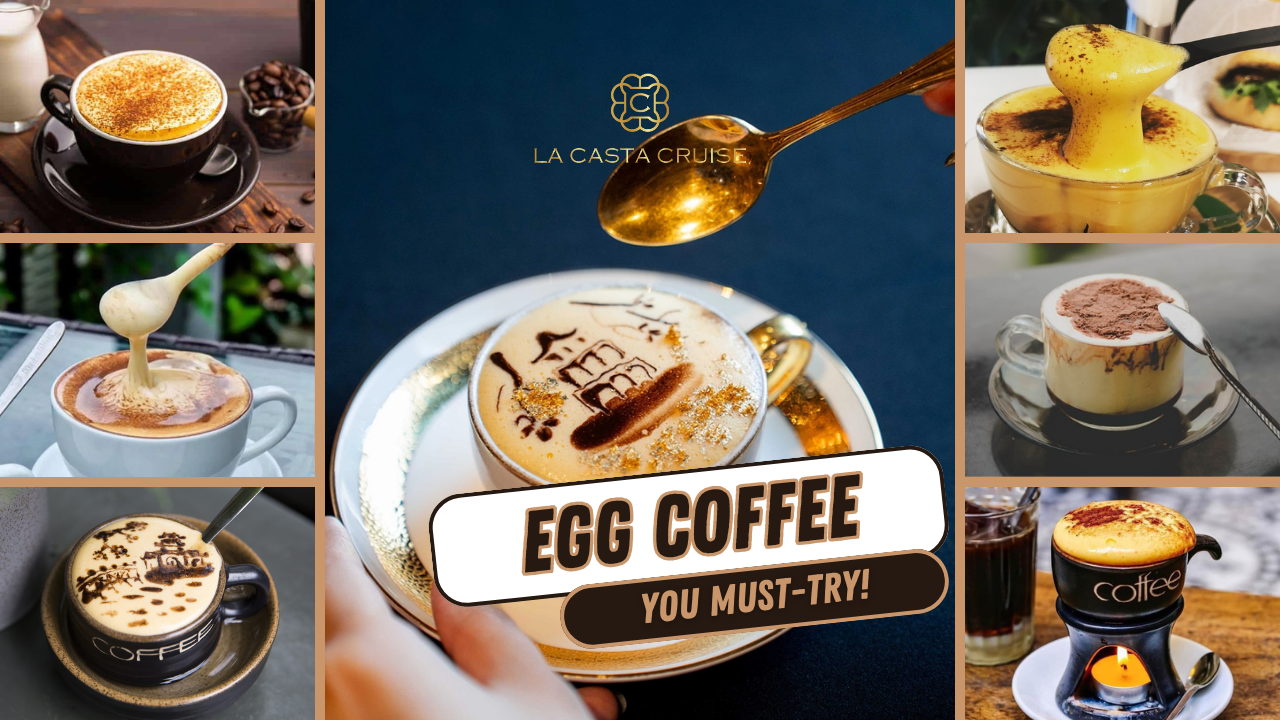
For a sweet and decadent finish to the list of 10 Must-Try Vietnamese Food for Tourists, Cà Phê Trứng (Egg Coffee) is essential. Originating in Hanoi, this unique beverage was created during the French colonial period when fresh milk was scarce. Local ingenuity led to the substitution of milk with whipped egg yolk and sweetened condensed milk.
The result is an innovative and indulgent drink: a dense layer of frothy, meringue-like egg cream resting atop rich, dark Vietnamese Robusta coffee, typically brewed using the traditional phin filter. To maintain the coffee’s heat and slightly “cook” the egg cream, the serving cup is often placed in a small bowl of hot water. This creates a luxurious texture and a balance of bitter coffee and sweet, creamy foam.
The dishes detailed above—from the familiar Phở and Bánh Mì to regional specialties like Chả Mực and Cao Lầu—comprise the 10 Must-Try Vietnamese Food for Tourists and showcase the culinary depth available to travelers across the country.
IV. Beyond the Plate: Vietnamese Dining Etiquette for Travelers
Understanding Vietnamese Dining Etiquette for Travelers is crucial, as dining in Vietnam is more than just nourishment; it is a profoundly social and cultural event that fosters community bonding and the passing down of traditions. Adhering to local customs shows respect and enhances the traveler’s experience.
4.1. Mastering Chopsticks and Communal Dining
Vietnamese Dining Etiquette for Travelers centers on respect and community. Always wait for everyone to be seated, and for the eldest to start eating, before beginning. A polite invitation, “Please join me for a meal”, shows courtesy.
Chopstick manners are essential: never stick them upright in rice, cross them, point at others, or dig through shared dishes. Instead, take small portions from communal plates and place food directly into others’ bowls. If chopsticks feel challenging, it’s fine to ask for a fork.
4.2. Simple Vietnamese Phrases for Ordering Food
Overcoming the language barrier enhances the ability of Vietnamese Dining Etiquette for Travelers to connect with locals. While most vendors are accustomed to tourists pointing at dishes, knowing a few simple phrases is appreciated:
- To order a specific number of items: Cho + [your pronoun] + [quantity] + [dish name/measure word].
- Example: Cho em 1 tô phở (One bowl of Phở, please!)
- To simply point at a dish: Cho + [your pronoun] + cái này (This one, please!).
These simple phrases facilitate smoother transactions and demonstrate an appreciation for the local language.
V. The Delicious Side Effect: Healthy Vietnamese Cuisine Benefits
For health-conscious individuals, exploring Vietnam’s culinary offerings comes with significant advantages. Highlighting the Healthy Vietnamese Cuisine Benefits adds tremendous value for modern travelers who prioritize wellness alongside flavor.
5.1. Low Fat, High Flavor: Why Vietnamese Food is Ideal for Travelers
Vietnamese cuisine is widely recognized for its health advantages, including being low-fat, immune-boosting, and rich in vitamins and minerals. The traditional cooking techniques employed,such as steaming, wrapping, and minimal oil-based preparation—help preserve the nutritional integrity of the raw ingredients.
This low use of grease and oil is a key distinction. The cuisine consciously avoids the heavy fats common in many global counterparts. Lean proteins are staples; fish, chicken, and tofu are frequently used, providing essential amino acids and minimizing unhealthy fat intake. Fish, in particular, is an excellent source of omega-3 fatty acids, which support heart and cognitive function. By focusing on low-fat preparation and fresh components, Vietnamese cuisine is positioned as an ideal, guilt-free dining option for travelers, appealing directly to those seeking Healthy Vietnamese Cuisine Benefits.
5.2. The Power of Herbs and Spices
The extensive use of fresh herbs is not merely for flavor; it is integral to the Healthy Vietnamese Cuisine Benefits. Many herbs and spices commonly incorporated into the 10 Must-Try Vietnamese Food for Tourists offer distinct medicinal properties:
- Coriander (Cilantro): Widely used for its fresh, citrusy flavor, it is rich in Vitamins A and K, aiding in healthy digestion and detoxification.
- Basil (Húng Quế): Known for its rich aroma, it possesses antibacterial and anti-inflammatory properties, providing antioxidants that help reduce inflammation in the body.
- Turmeric: Often used in marinades, such as for the Cha Ca dish , turmeric adds color and a host of health benefits, including powerful anti-inflammatory effects.
- Fish Sauce (Nước Mắm): Beyond its essential umami flavor, this staple condiment provides rich sources of calcium, phosphorus, iron, and omega-3 fatty acids, contributing to depth and nutritional value in dishes.
This combination of fresh vegetables, aromatic herbs, and lean proteins ensures that the culinary journey through Vietnam is both delicious and nutritionally sound.
VI. Conclusion: Your Culinary Journey Awaits
Vietnam offers a rich culinary journey rooted in history, regional variety, and a devotion to freshness and balance. This guide highlights the 10 Must-Try Vietnamese Food for Tourists, from iconic Phở and Bánh Mì to local specialties like Ha Long’s Chả Mực and Hoi An’s Cao Lầu.
To truly savor Vietnam, travelers should follow local customs from the Vietnamese Dining Etiquette for Travelers and practical tips in the Essential Vietnamese Street Food Guide. By embracing these traditions and the Healthy Vietnamese Cuisine Benefits, visitors can experience how every dish, especially the 10 Must-Try Vietnamese Food, celebrates Vietnam’s culture and community spirit.
Visit Travel Guide to explore more of Vietnam, from the majestic Ha Long Bay to the country’s most captivating cultural adventures.

